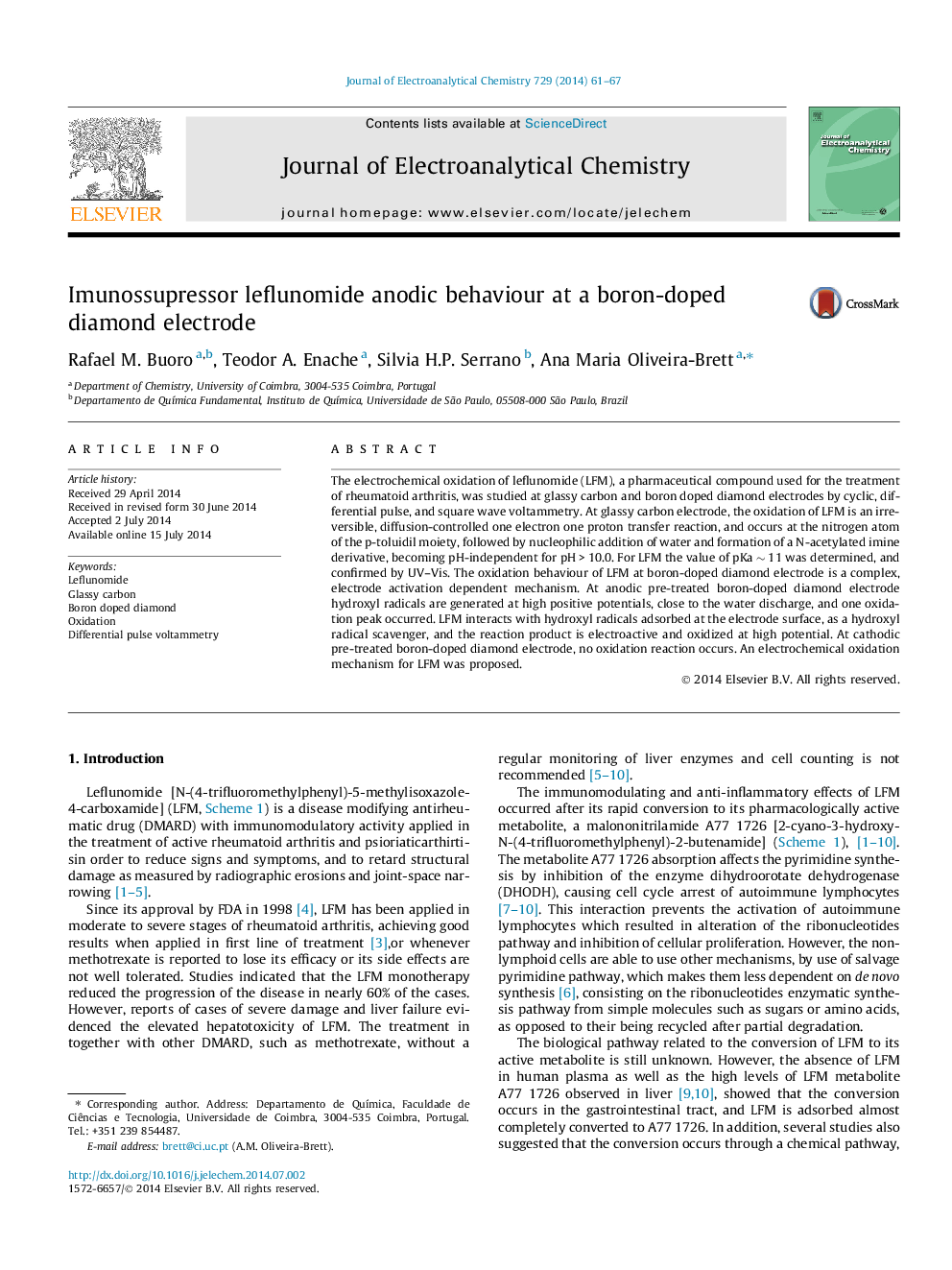| Article ID | Journal | Published Year | Pages | File Type |
|---|---|---|---|---|
| 218702 | Journal of Electroanalytical Chemistry | 2014 | 7 Pages |
•The immunosuppressive leflunomide anodic behavior at glassy carbon and boron doped diamond electrodes.•Anodic and cathodic electroactivation of BDD lead to different electrochemical answer of leflunomide.•Leflunomide redox mechanism at GCE and a-BDDE.
The electrochemical oxidation of leflunomide (LFM), a pharmaceutical compound used for the treatment of rheumatoid arthritis, was studied at glassy carbon and boron doped diamond electrodes by cyclic, differential pulse, and square wave voltammetry. At glassy carbon electrode, the oxidation of LFM is an irreversible, diffusion-controlled one electron one proton transfer reaction, and occurs at the nitrogen atom of the p-toluidil moiety, followed by nucleophilic addition of water and formation of a N-acetylated imine derivative, becoming pH-independent for pH > 10.0. For LFM the value of pKa ∼ 11 was determined, and confirmed by UV–Vis. The oxidation behaviour of LFM at boron-doped diamond electrode is a complex, electrode activation dependent mechanism. At anodic pre-treated boron-doped diamond electrode hydroxyl radicals are generated at high positive potentials, close to the water discharge, and one oxidation peak occurred. LFM interacts with hydroxyl radicals adsorbed at the electrode surface, as a hydroxyl radical scavenger, and the reaction product is electroactive and oxidized at high potential. At cathodic pre-treated boron-doped diamond electrode, no oxidation reaction occurs. An electrochemical oxidation mechanism for LFM was proposed.
